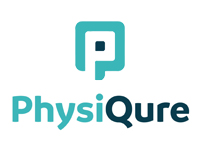Muscle stiffness after fracture is often very severe, causing untold suffering to patients. Physiotherapists often recommend physical therapy and x-rays in order to reduce pain and prevent further damage. Unfortunately, this approach does not always reduce muscle stiffness after fracture, and patients may even experience increased pain from their previous injuries.
If physical therapy or x-rays are recommended, it is important for the patient to know which treatments provide the best results. While physiotherapists can determine which fracture treatment options are best for each patient, they sometimes have limited training in terms of rehabilitation and fracture management, which make it difficult for them to recommend which treatment is best for a specific patient.
Physical therapy is usually recommended as an after-bite therapy to treat mild to moderate fractures. While it can be very effective in stabilizing and reducing soreness, it can also slow the rehabilitation process and cause possible joint stiffness.
Therefore, physical therapy is usually recommended as a first course of action in cases where pain symptoms do not go away and patients are experiencing muscle spasms or weakness. In addition, in cases where patients experience delayed healing or delayed onset of muscle function, physical therapy is not as effective.
X-rays are usually the next course of action after physical therapy in order to diagnose and identify fractures. This approach is used to determine the nature of the bone and surrounding tissues that have been injured, allowing physiotherapists to make the best course of treatment.
It can also help determine when fractures will occur and what type of treatment will be most effective. When patients are receiving radiographic imaging after a fracture, they should focus on improving their fractures and prevent future fractures from happening.
Movement and flexibility, which are typically the main problem associated with fractures, can be improved with the use of ultrasound. Ultrasound treatments are particularly beneficial for patients with moderate to severe muscle spasticity.
A mild anaesthetic may be administered during a procedure to minimize discomfort and decrease the amount of time needed to fully recover from a fracture. Once healed, patients should increase strength and decrease the amount of movement in order to prevent further complications or pain.
Physiotherapists should ensure that all fractures are appropriately diagnosed and treated. Medications can help reduce inflammation and speed the healing process but do not reduce the strength of the bones and cartilage that were damaged or injured.
When patients receive medical treatment for a fracture, physiotherapists should focus on increasing the strength of the affected bones through exercise. Rest is also recommended to allow the bone to properly heal and increase flexibility. Individuals who are experiencing symptoms of severe pain, stiffness or limitation should seek medical advice.
Before undergoing manipulation or mobilization, patients should consult with their doctor first. Medications should be avoided during the recovery process, as these may cause adverse side effects. The goal of therapy is to increase strength and decrease fatigue in patients with fractures, while allowing them to participate in daily activities.
Muscle stiffness may result from poor movement patterns or poor mechanics of the bone and the muscles surrounding it. If a fracture has been suffered, early diagnosis and conservative care are the best methods to reduce muscle stiffness after fracture using mobilization and physical therapy.
